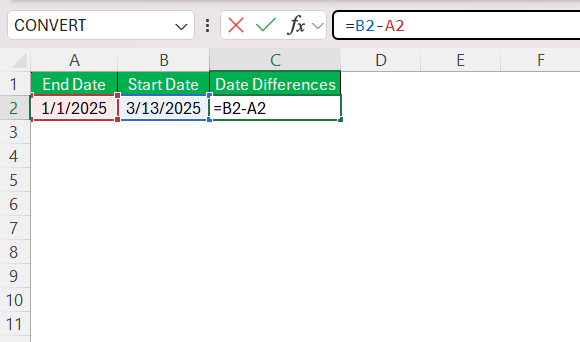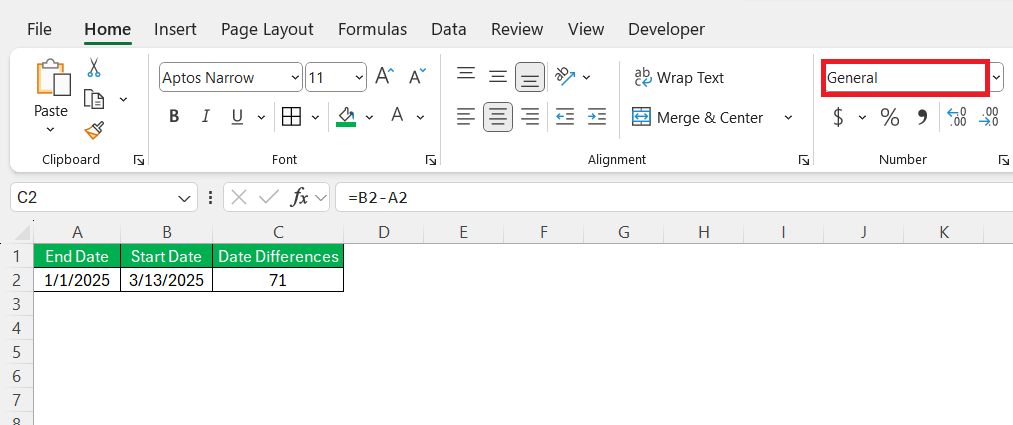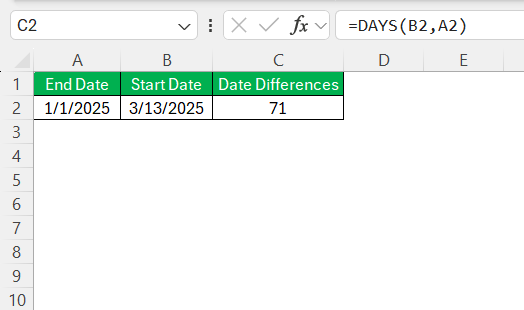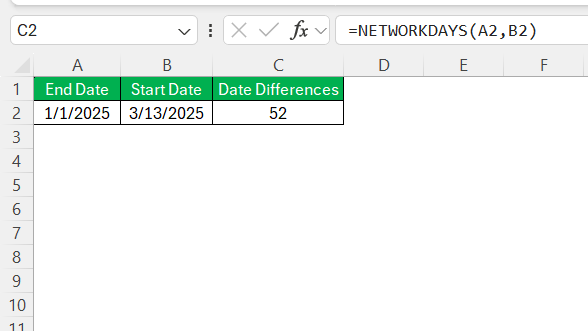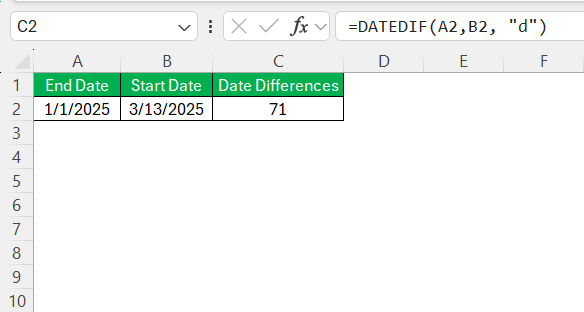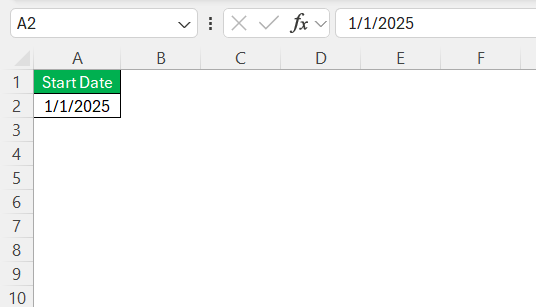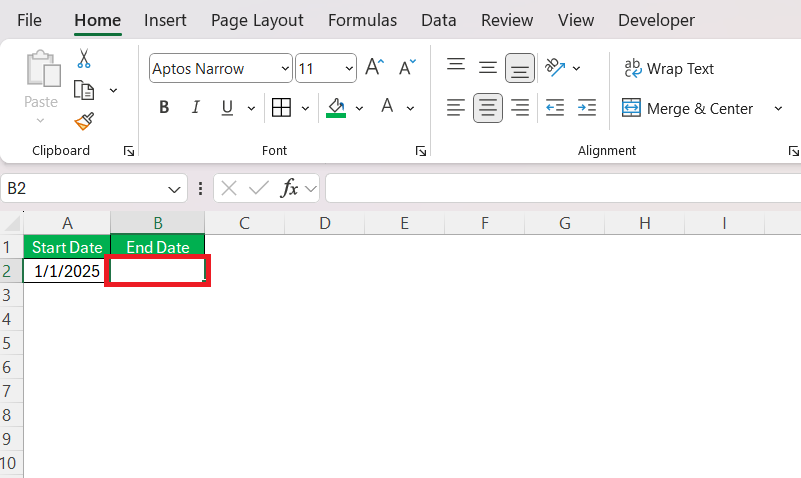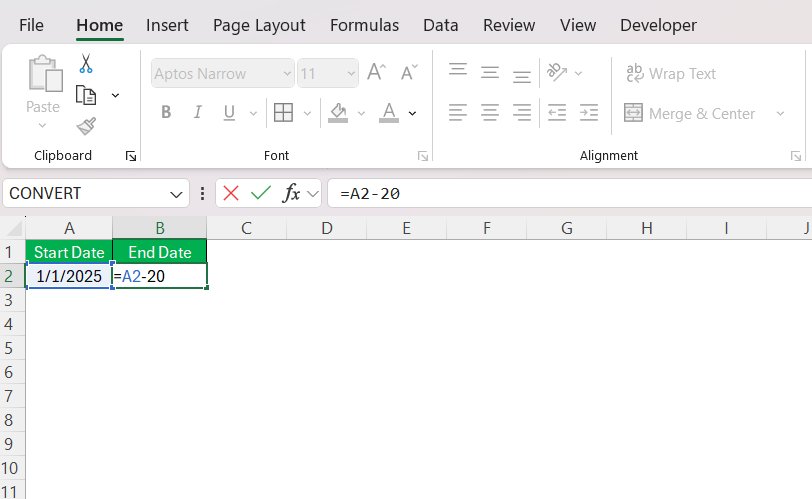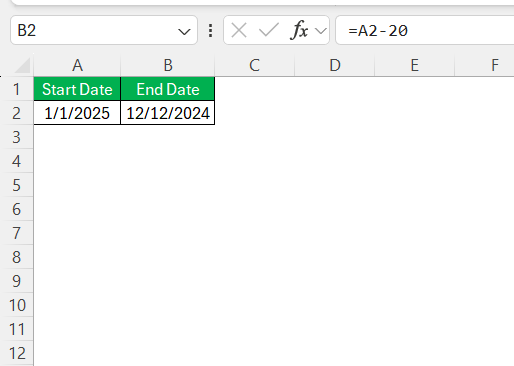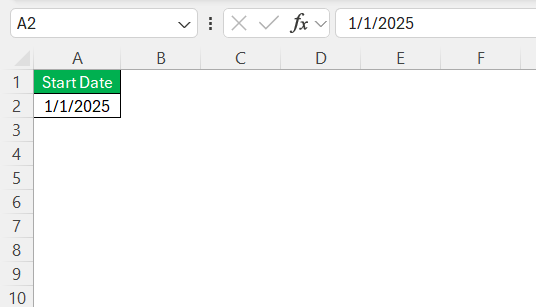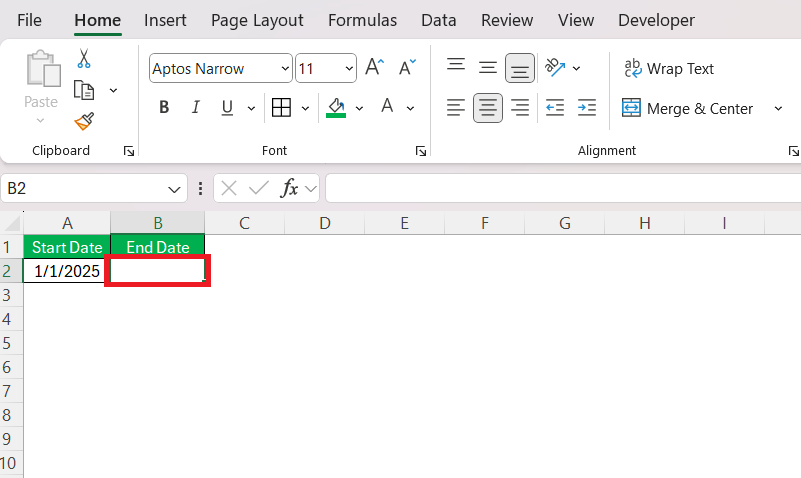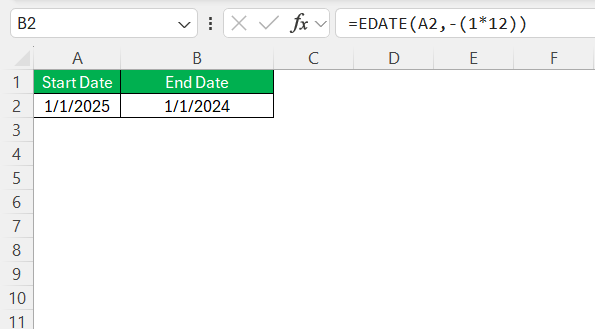Working with dates in Excel is a common task, and sometimes I need to calculate the difference between two dates. Whether I’m figuring out the number of days between project deadlines, tracking employee tenure, or calculating an aging report, subtracting dates in Excel is straightforward. Let me walk you through the different ways to subtract a date in Excel.
Key Takeaways:
- Subtracting dates in Excel is simple using direct subtraction or built-in functions.
- Excel stores dates as serial numbers, making calculations seamless.
- Functions like DAYS(), NETWORKDAYS(), and DATEDIF() offer advanced date subtraction options.
- The EDATE function helps subtract months and years while maintaining accuracy.
- Date subtraction is useful for project tracking, financial analysis, and HR tasks.
Table of Contents
Introduction: Excel Date Subtraction Basics
Why Date Arithmetic is a Game-Changer in Excel
Date arithmetic in Excel is a powerful feature that simplifies the process of scheduling, analysis, and data management. It allows me to perform tasks such as determining the number of days between two dates, forecasting future deadlines based on current data, and tracking time-sensitive information with precision and efficiency. By mastering date arithmetic, I can unlock the full potential of timeline tracking and scheduling within Excel.
Understanding Excel’s Date Serial Numbers
Excel’s decision to store dates as serial numbers may seem unconventional, but it’s an ingenious approach that makes calculations with dates straightforward for me. Since January 1, 1900, is recognized as serial number 1, each subsequent day is just an increment of one. This numbering system is integral to Excel and comes into play when I’m performing date subtractions.
By grasping this concept, I can work with dates more intuitively, treating them like any other numerical value. It’s all about understanding that behind the scenes, a date is just a number representing a position in Excel’s chronological inventory.
Demystifying Date Subtraction Methods
The Simple Subtraction Formula to Find Date Differences
To calculate the difference between two dates in Excel, I employ a simple subtraction formula: ‘End_Date – Start_Date’. This straightforward approach gives me the number of days that separate two dates. If, for instance, I have a project start date in cell A2 and an end date in cell B2, I’ll use the formula ‘B2-A2’ to reveal the project’s duration in days.
When I first apply this method, I might encounter a date format in the result cell, which can be rectified by formatting the cell to ‘General’.
That way, the outcome will be presented as a number, giving me the exact day count I need.
Utilizing Excel Functions for Advanced Date Subtraction
For more sophisticated date subtraction needs in Excel, I take advantage of built-in functions like DAYS(), NETWORKDAYS(), and DATEDIF(). The DAYS() function is explicitly designed to return the number of days between two dates, making it as simple as =DAYS(end_date, start_date).
When working days need to be considered, I use NETWORKDAYS(start_date, end_date) to exclude weekends and even holidays if supplied.
And for intervals of years, months, and days, DATEDIF(start_date, end_date, "interval") is unrivaled in its capability, despite its reputation as a somewhat hidden feature within Excel.
Step-by-Step Tutorial on Subtracting Dates
How to Subtract Days from a Given Date
Subtracting days from a given date in Excel involves a simple alteration to the date addition process. To subtract a specific number of days, I use a formula with a negative sign. For example, if I have a date in cell A2 and want to subtract 10 days, I would input =A2 - 10 into the desired cell. This action would compute a new date that is 10 days earlier than the original.
Here’s how to perform the subtraction:
STEP 1: Enter the original date in a cell (e.g., A2).
STEP 2: Choose another cell to display the new date.
STEP 3: Input the formula =A2 - number_of_days (replace number_of_days with the actual number).
STEP 4: Press Enter, and the cell will now show the date that results from the subtraction.
Whether adjusting deadlines or computing past records, this method remains an essential technique in my Excel toolkit.
Strategies for Subtracting Months and Years with Ease
Subtracting months and years from a date in Excel is a task that I can handle efficiently using the EDATE function. For instance, when I need to find the date that falls, say, 5 months before September 15, 2019, I use the formula =EDATE("9/15/19",-5). To subtract years, I multiply the number of years by 12 to convert them into months, as the EDATE function primarily deals with months.
Here are the steps I follow:
STEP 1: Enter the original date into a cell (e.g., A2).
STEP 2: Choose a cell where the output will be displayed.
STEP 3: For subtracting months, use =EDATE(A2,-number_of_months).
STEP 4: For subtracting years, use =EDATE(A2,-(number_of_years*12)).
This strategy simplifies subtracting longer timeframes without having to worry about leap years or varying month lengths.
Real-World Applications of Subtracting Dates
Project Management and Deadline Tracking
In the realm of project management and deadline tracking, subtracting dates in Excel is an indispensable skill. It allows me to efficiently calculate the remaining time to a project deadline, determine milestones, and manage project timelines. By utilizing the simple subtraction formula, coupled with functions like NETWORKDAYS() for working days or EDATE() for shifting deadlines by months, I can maintain a dynamic schedule that automatically adjusts with the progression of time.
Implementing Excel in this way grants me the foresight to anticipate project deliverables and proactively manage resources. Moreover, by mastering date functions, I can also manipulate dates to model best- and worst-case scenarios, which is vital for risk assessment and contingency planning.
Financial Analysis and Age Calculations
Financial analysis and age calculations are two areas where subtracting dates in Excel is not just useful, but often essential. In financial modeling, for instance, calculating the maturity dates of bonds, measuring time to revenue recognition, or assessing interest accrual periods all involve precise date subtractions. Here, accuracy is critical, and functions like DATEDIF() can give me the exact duration between two dates, vital for interest computations or time-value of money analysis.
Similarly, in HR or customer relationship management, knowing how to calculate someone’s age or tenure becomes simpler with Excel. Rather than counting manually, I can use DATEDIF() to instantly derive the years, months, and days from a birthdate to today’s date. This is particularly useful for age-specific product targeting, benefits eligibility, or service recognition programs.
FAQ: Excel Date Subtraction Mastery
How Do I Subtract Two Dates to Get the Number of Days In-between?
To subtract two dates and get the number of days in-between, simply use the formula =End_Date - Start_Date. Input this formula in a new cell where the ‘End_Date’ and ‘Start_Date’ are the respective dates you wish to compare. Excel will automatically calculate the number of days separating the two dates and display it.
Can I Subtract a Date from Today’s Date Automatically in Excel?
Yes, to subtract a date from today’s date automatically in Excel, use the =TODAY()-Past_Date formula. ‘TODAY()’ generates the current date, and when you subtract a past date from it, Excel calculates the difference. This is useful for tracking elapsed time from a certain event until the present day.
What is the difference between edate and eomonth functions?
The difference between the EDATE and EOMONTH functions in Excel lies in their output. While EDATE returns the date exactly a specified number of months before or after the start date, EOMONTH gives me the last day of the month for the date resulting after adding or subtracting the given months. Essentially, EDATE maintains the day of the month, and EOMONTH jumps to the end of the month.
How to take the difference of dates in Excel?
To take the difference between dates in Excel, I use the subtraction formula =End_Date - Start_Date or employ functions like DATEDIF(start_date, end_date, "D"). Both methods will return the number of days between two dates. Selecting the cell in ‘General’ format ensures the result is displayed as a number rather than a date.
How do I subtract months from a date in Excel?
To subtract months from a date in Excel, I utilize the EDATE function. The formula =EDATE(start_date, -number_of_months) effectively moves the date backward by the specified number of months. For instance, =EDATE(A2, -3) would subtract 3 months from the date in cell A2, offering a simple solution for backward date projections.
John Michaloudis is a former accountant and finance analyst at General Electric, a Microsoft MVP since 2020, an Amazon #1 bestselling author of 4 Microsoft Excel books and teacher of Microsoft Excel & Office over at his flagship MyExcelOnline Academy Online Course.

